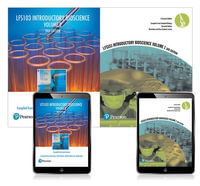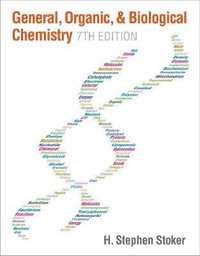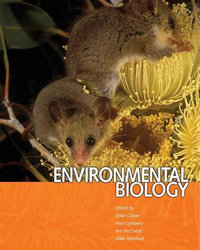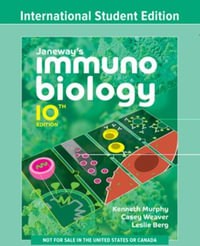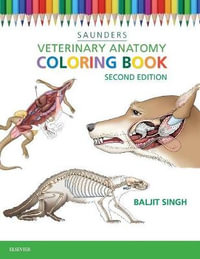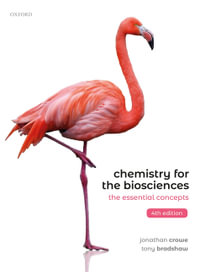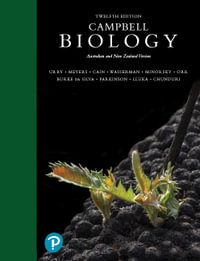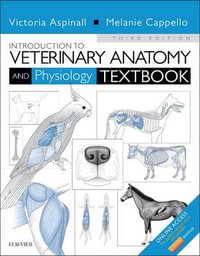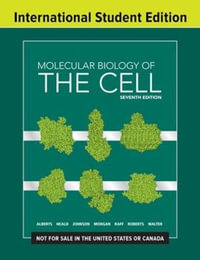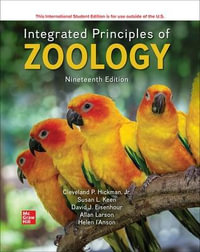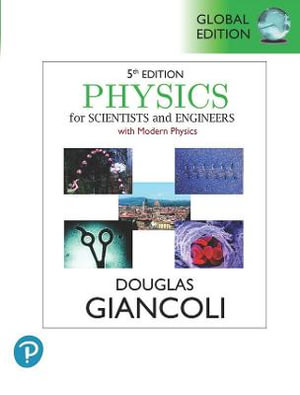
Physics for Scientists & Engineers with Modern Physics, Global Edition
5th Edition
By: Douglas Giancoli
Paperback | 25 July 2023 | Edition Number 5
At a Glance
Paperback
RRP $118.95
$97.35
18%OFF
When will this arrive by?
Physics for Scientists and Engineers combines outstanding pedagogy and a clear and direct narrative with applications that draw the student into the physics at hand. The text gives students a thorough understanding of the basic concepts of physics in all its aspects, from mechanics to modern physics. Each topic begins with concrete observations and experiences that students can relate to their everyday lives and future professions, and then moves to generalisations and the more formal aspects of physics to show why we believe, what we believe.
The 5th Edition presents a wide range of new applications including the physics of digital and added approaches for practical problem-solving techniques.
Features- Approach Steps in worked-out examples help students understand the reasoning behind the method used to solve the problem and answer their questions of 'how/where do I start?'. Sections in worked-out examples appear after the Solution and remark on the solution itself, mention an application, or give an alternate approach to solving the problem.
- Problem Solving Strategies placed throughout the text suggest a step-by-step approach to problem solving for a particular topic, but the basics remain the same. Most of these 'Strategies' are followed by an Example that is solved by explicitly following the suggested steps.
- 'Chapter Opening Questions' (COQs) are multiple-choice questions at the beginning of each Chapter that immediately engage students with key Chapter concepts, presenting common student misconceptions. Students revisit the COQs later in the Chapter, as an Exercise, to see if their answers have changed.
- Answers to all Exercises are given at the end of the Chapter.
- A Physics Applied marginal note placed in the margin makes it easy to spot the Applications within chapters. A full list of Applications appears after the Table of Contents.
- Problem-Solving Marginal Notes refer to hints within the text for solving Problems and are included throughout the Chapters to emphasise key Problem-Solving strategies.
- Problem-Solving Boxes, found throughout the book, outline a step-by-step approach to get students thinking about and involved in the problem at hand.
- Optional Section 2-9 Graphical Analysis and Numerical Integration, including Example 2-22 Numerical Integration, describes techniques students can use to solve problems numerically, using a computer or graphing calculator. Problems that use these numerical techniques are found at the end of many Chapters.
- Digital Applications describe the basics of digital from the ground up.
- Binary numbers, bits and bytes, are introduced in Chapter 23 along with analog-to-digital conversion (ADC), and vice versa, including digital audio and how video screens work. Other topics include information compression, sampling rate, bit depth, pixel addressing, digital transmission and, in later chapters, information storage (RAM, DRAM, flash), digital cameras and their sensors (CCD, CMOS).
- Digital (Chapters 23, 29, 33, 40) includes quantization error, digital error correction, noise, bit error rate, digital TV data stream, refresh rate, active matrix, thin film transistors, digital memory, bit-line, reading and writing of memory cells (MOSFET), floating gate, volatile and nonvolatile memory, Bayer, JPEG, ASCII code, and more.
- Mis Conceptual Questions contain common student misconceptions at the end of every chapter just before the Problems. These multiple-choice questions help students avoid common mistakes and discover and distinguish their own misconceptions when solving problems.
About the Author
Douglas C. Giancoli obtained his BA in physics (summa cum laude) from UC Berkeley, his MS in physics at MIT, and his PhD in elementary particle physics back at UC Berkeley. He spent 2 years as a post-doctoral fellow at UC Berkeley's Virus lab developing skills in molecular biology and biophysics. His mentors include Nobel winners Emilio Segre and Donald Glaser. He has taught a wide range of undergraduate courses, traditional as well as innovative ones, and continues to update his textbooks meticulously, seeking ways to better provide an understanding of physics for students. Doug's favourite spare-time activity is the outdoors, especially climbing peaks. He says climbing peaks is like learning physics: it takes effort, and the rewards are great.
ISBN: 9781292440279
ISBN-10: 1292440279
Published: 25th July 2023
Format: Paperback
Language: English
Number of Pages: 1472
Audience: College, Tertiary and University
Publisher: Pearson Education Limited
Country of Publication: GB
Edition Number: 5
Dimensions (cm): 28 x 21.5 x 6
Weight (kg): 3.14
Shipping
| Standard Shipping | Express Shipping | |
|---|---|---|
| Metro postcodes: | $9.99 | $14.95 |
| Regional postcodes: | $9.99 | $14.95 |
| Rural postcodes: | $9.99 | $14.95 |
How to return your order
At Booktopia, we offer hassle-free returns in accordance with our returns policy. If you wish to return an item, please get in touch with Booktopia Customer Care.
Additional postage charges may be applicable.
Defective items
If there is a problem with any of the items received for your order then the Booktopia Customer Care team is ready to assist you.
For more info please visit our Help Centre.
You Can Find This Book In
This product is categorised by
- Non-FictionSciencePhysics
- Text BooksHigher Education & Vocational TextbooksBiology and Sciences Higher Education Textbooks
- Text BooksTextbook FinderFlinders UniversityPHYS1701 Physics For The Modern World
- Text BooksTextbook FinderJames Cook UniversityPH2019 Introduction To Electromagnetism Optics And Thermodynamics
- Text BooksTextbook FinderRMIT UniversityOENG1208 Engineering Science
- Text BooksTextbook FinderRMIT UniversityPHYS2189 Introduction to Electromagnetism
- Text BooksTextbook FinderUniversity of MelbournePHYC10009 Foundations of Physics
